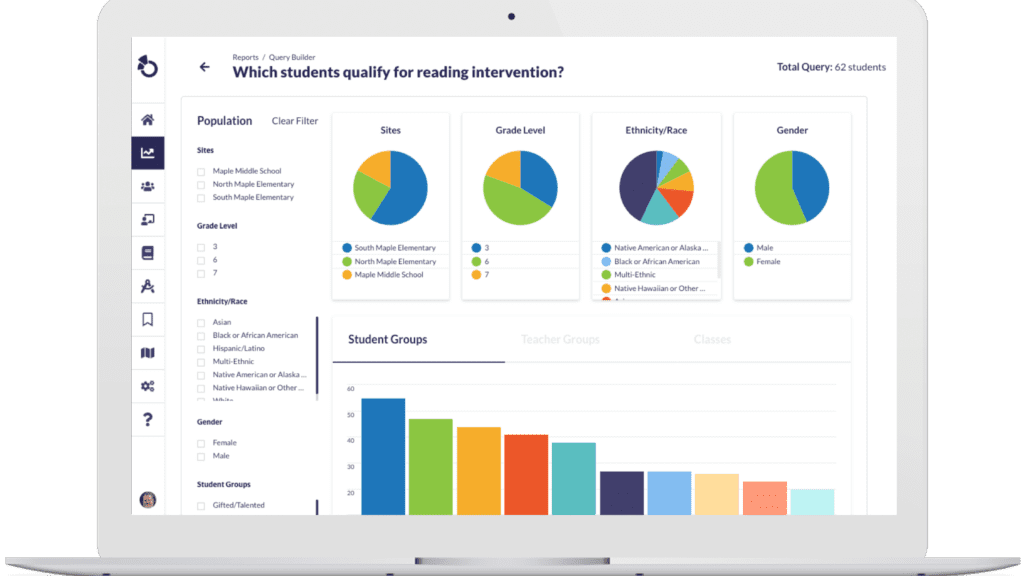Can AI help K-12 educators complete rote tasks associated with teaching?
By: Keith Westman
While Artificial Intelligence (AI) is already being used to solve significant problems in many industries, AI is relatively untapped in K-12 education.
Otus is on a mission to increase student outcomes by leveraging a wide variety of data points to help educators make more meaningful and personalized connections and learning experiences for students.
What AI should never do in K-12 education
Otus strongly believes that the power of human teachers and leaders can never be replaced. The role of technology in education should mirror the role of technology in every other sector, it should increase efficiency.
AI should never replace teachers. AI should never replace sound decision making. AI should never decide what a teacher teaches or what a student learns.
At best, AI should make recommendations, assist teachers in completing rote tasks, and help identify patterns and context to data and present it to professional educators who will determine the next steps.
AI is already in our lives
There are many other examples of how AI provides efficiencies in other industries; from being able to predict when train engines fail so that those trains can be fixed before they break down on train tracks (and disrupt many people), to helping doctors diagnose cancer in its earliest stages, AI can be transformational.
Otus uses an AI-powered tool to support our clients. When a user uses our chat tool to ask a question about how to use Otus, this tool uses AI to recommend responses to our client service specialist based on responses that our client services team has previously written to similar questions.
If a user submits a question that has never been asked before, a client services specialist will write a response. By helping our client service specialists spend their time assisting users who have unique or uncommon questions, they are more efficient. In the end, all of our users benefit because they are receiving responses very quickly.
The building blocks of responsible AI in K-12
There are dozens of tasks that teachers need to complete each day, all of which deal with student academic progress, non-cognitive attributes and traits, and social-emotional well-being. Without Otus, each of these tasks below (and more) are completed by hand or through the use of a single-solution technology (Table A). When the data from each of these tasks is disconnected and fragmented, it is virtually impossible to have a holistic and accurate picture of the student, classroom, school, and district performance.
Table A: Common Daily Tasks for Educators
| Student and family communication | Tracking work habits | Designing relevant lessons |
| Attendance | Documenting social-emotional behaviors | Creating reteaching and intervention resources |
| Grading homework assignment | Analyzing high-stakes assessments | Curating web-based content |
| Documenting family contact | Identifying strengths, interests, and passions | Reviewing IEPs and other important student documents |
An AI-driven assistant for every educator
The more Otus is used, the more information about student performance exists on the platform. Through the use of data science, we can help educators identify patterns, develop learning resources, and eliminate redundant tasks so that they don’t have to spend hours analyzing data looking for meaning.
Turn data into meaningful information for educators
K-12 schools are data rich and information poor. Otus can take all of the data that is generated in every classroom, every day, and synthesize the information so that it is meaningful to teachers, students, families, and educational leaders. Most importantly, the data is owned and controlled at the district level.
Ultimately, and in time, we will be able to leverage external data sources so that Otus can recommend early interventions for at-risk students, strategies to keep students appropriately challenged, and, most importantly, empower teachers to spend less time looking at data, and more time building relationships with students.
Related Resources
Request a demo!
See exactly how Otus can help your school accelerate student growth and improve student outcomes – all while saving educators time.





